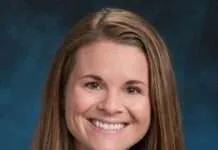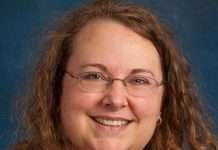My mother had 6 siblings, 16 aunts and uncles, and innumerable cousins. She was the first of them all to be diagnosed with breast cancer.
I think of my mom every time one of my patients tells me they aren’t concerned about breast cancer because it doesn’t run in their family. Unfortunately, that is true of most people who are diagnosed with the disease.
I also think of my mother every time I do a breast exam, or teach someone else how to do a self exam. Her breast cancer was one not detectable by the mammogram technology available in the early 2000s. Even today, with 3D mammograms, not all breast cancer can be seen on routine screenings. She found her cancer herself, by noticing a change in her breast. Her diagnosis was delayed, however, because, having had multiple previous biopsies that turned out to be “nothing,” she prioritized all the other things she had to do that spring over going to her doctor.
The importance of being vigilant for these changes is not limited to one gender. Although most breast cancer patients are female, approximately 1% are male. Anyone who notices a change in their breast should be seen by a clinician.
Breast cancer detection has changed dramatically since my mother was diagnosed. 3D mammograms, which present clearer images to the radiologist, are routine. Contrast Enhanced Spectral mammography and breast MRI offer new tools to high risk individuals, women with abnormal screening mammograms, and their health care teams. People known to be at high risk might take medication to reduce that risk, and might undergo more frequent imaging and exams. Genetic counseling and genetic testing help us identify those who could benefit from this close follow up.
Breast cancer treatment has also changed dramatically. Advances in surgical treatment have reduced the risk of post operative complications, such lymphedema: chronic swelling caused by the disruption in the flow of fluid through the lymph nodes. Specialized testing of a person’s cancer lets oncologists identify those patients most likely to benefit from chemotherapy. Conversely, it also lets them identify those who might skip it. New classes of medications offer hope even to people whose cancer has spread, and improve the tolerability and effectiveness of old medications. We’ve gotten better at helping patients, and their families, navigate the challenges that come with the disease and its treatments.
Many things in medicine have changed over the 25 years I’ve been practicing. The advances in cancer treatment may well be some of the most exciting. But some old wisdom still holds true: If you notice a change in your breast, please get it checked out. Even if you had a normal mammogram a few months ago.
Debra Johnson, M.D. is part of The Prairie Doc® team of physicians and currently practices family medicine in Brookings, South Dakota. Follow The Prairie Doc® at www.prairiedoc.org and on Facebook featuring On Call with the Prairie Doc® a medical Q&A show providing health information based on science, built on trust for 22 Seasons, streaming live on Facebook most Thursdays at 7 p.m. central.





